Services
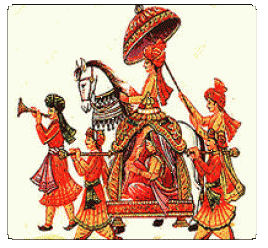 |
HINDU WEDDING CEREMONY:A Hindu wedding ceremony is a religious occasion in an Indian society. It has evolved from the vedic period which historians place between 3000-5000 B.C.E. The ceremony is a collection of rituals performed by the bride and the groom, their parents, and close relatives and friends. Panditji reads “Mantras” (verses) from the Holy Scriptures (the Vedas), written in Sanskrit-the original Indian Language. The wedding ceremony takes place in a “Vivah Mandap” a wedding pavilion. Each ritual has...
|
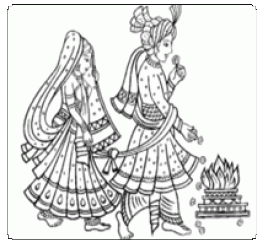 |
SINDHI WEDDING CEREMONY:A Sindhi wedding ceremony is not too different from a Hindu wedding ritual. It differs from a typical Hindu wedding because of its pre and post wedding rituals. The Mehraj, namely the sindhi priest, first performs the kachi misri, which is the informal engagement ceremony. Following that, if a male has not had Janya performed as a young adult, the scared thread ceremony is performed before the wedding. As the wedding approaches, Sindhi’s perform a prayer to Jhulelal, called the Behrana to ask ...
|
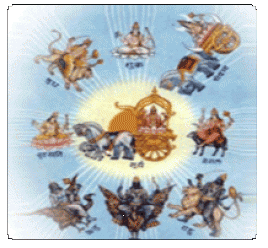 |
NAV GRAHA POOJAN: (GRAH SHANTI- Prayers to the nine planets):The prayers are offered the nine planets of our solar system. Ancient Indian astrological and astronomical studies prove that various celestial bodies have a tremendous influence on human lives and among them the effect of the planets and the moon of our solar system are most profound. During this poojan, Gods associated with these planets our invoked to bless the family.
|
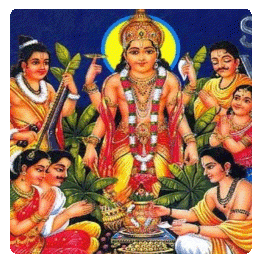 |
SHREE SATYANARAYAN PUJA AND KATHA:Shri Satyanarayana Puja is usually performed on the full moon or on auspicious occasions like marriages, blessing a new home, birthdays, or opening a new business. Pandit Bhagirath performs the katha with harmonium and tabla while singing bhajans so the crowd feels enchanted and enjoys the kirtan.
|
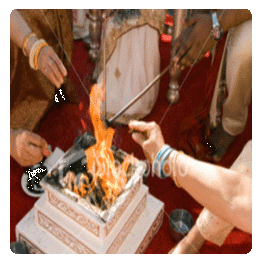 |
HAVAN:According to the Hindu culture, fire is considered to be the sustainer of life. In this presence of life, when the Mantras (religious hymns) are recited by the priest, it is believed that all the Gods and Goddesses of this universe come and sit around the auspicious fire. By conducting the Havan you are welcoming the God of Fire (Agnidev) to purify the atmosphere of your house and to bring good fortune.
|
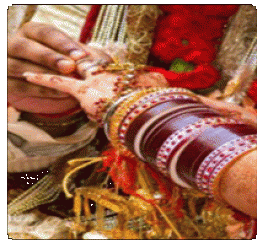 |
SAGAI VIDHI: (ENGAGEMENT CEREMONY):As there is saying, “names written in heart can be broken, but names written in circle can go on forever.” In the Sagai Vidhi, prayers are first offered to Lord Ganesha and His blessings are divine. Then the normal Sagai Vidhi is carried out by performing nav grah poojan and exchanging of the rings
|
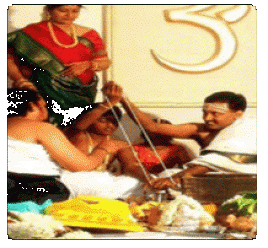 |
JANYA:Janya refers to the scared thread ceremony in the Hindu culture, also known as the coming of age ceremony. It is a very significant occasion in the life of a hindu. This ceremony is intended to initiate the child to the intellectual and spitiual journey. The mother gives birth to the child, this is the natural birth but when the guru (teacher) gives initiation to the child by giving the Gayatri Mantra, it is considered a second birth of the child. The thread ceremony starts with the worship all ...
|
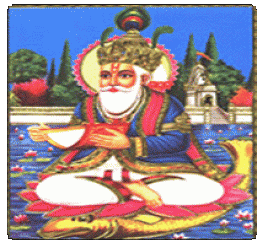 |
CHETICHAND:Chetichand marks the first day of the sindhi calendar, and is known as the Sindhi New Year. Also remembered as the birthday of Juhelal. On chetichand, sindhi’s all around the world seek blessing of juhelal and perform behrana. Chetichand usually falls in the month of March.
|
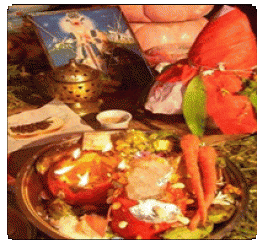 |
BEHRANA:Behrana refers to a satsang which is held in the name of Juhelal. It is usually performed on chetichand or at the beginning of any good deed, such as purchase of a new home, office, or welcoming of a new family member. It may also mark the beginning of a wedding ceremony. The Behrana saheb is a nicely decorated bronze thaal in which the idol of Jhulelal is placed and a Kunri (an earthen vessel), full of water and covered with red cloth, is kept. Wheat flour is kneaded and given a shape of a cone...
|



